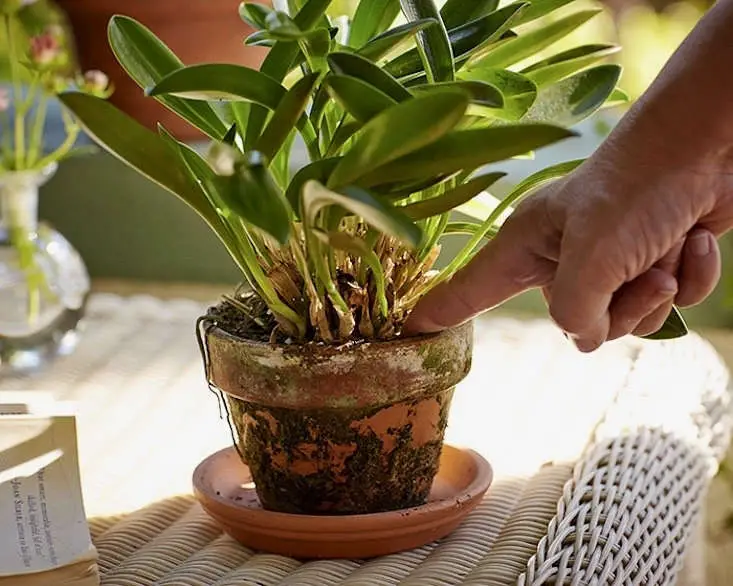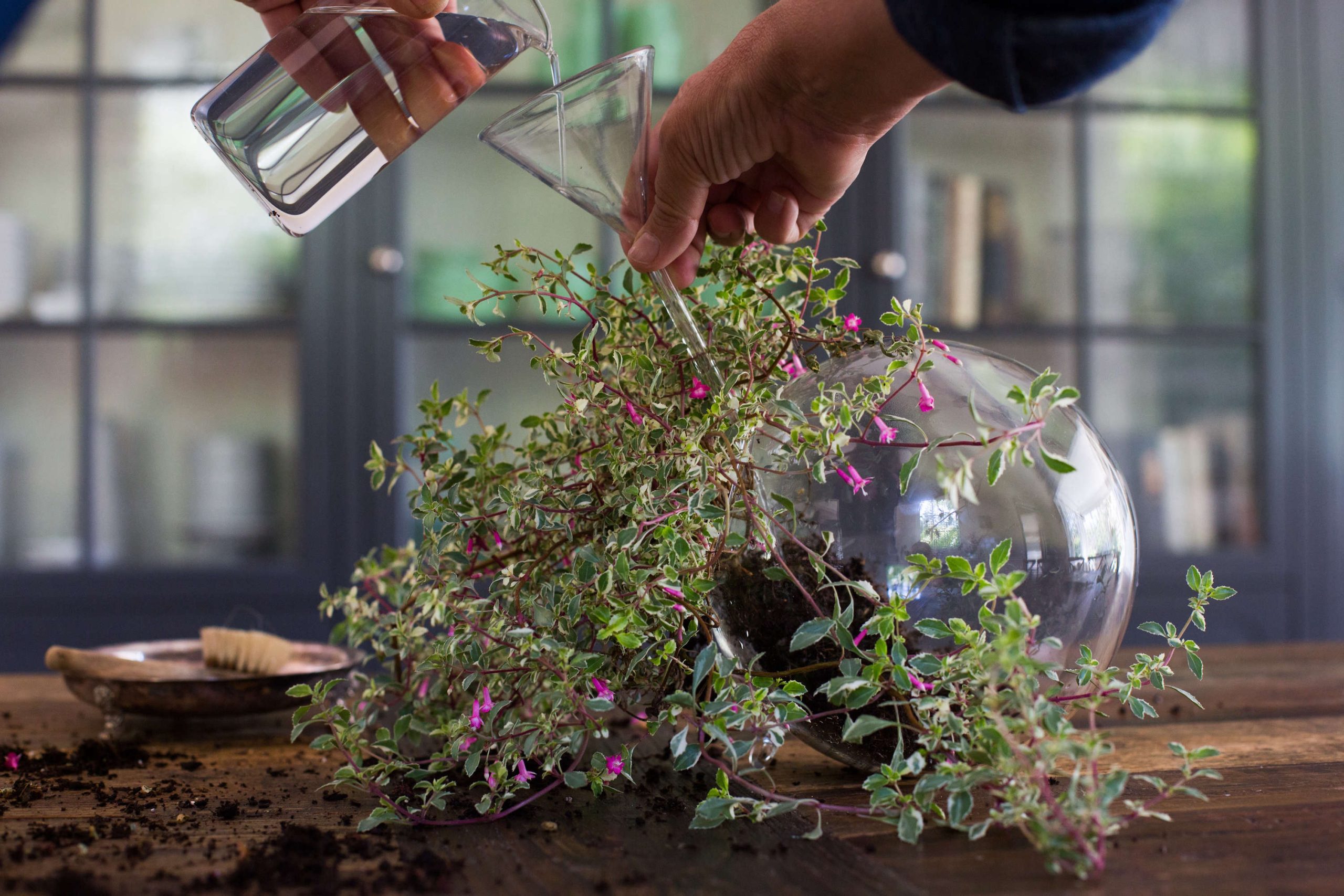If you are hovering on this page, one may assume that your houseplant’s leaves have turned yellow and it has drooped, unlike previous times. From the appearance, it seems like the plant which once warmed your heart have now lost its glory and counting its days. Before you decide to mourn its loss, what if you try to revive it for the last time? Mostly, it happens that potted plants look dead but do not actually die. So, how to save a dying plant? This digital write-up will lay out the guidelines for you.
While composing this article, we have taken assistance from experts on plant health and professional plant science professors. This guide details the modes to save the plant from the brink of death and ways to maintain its health.
Table of Contents
How to save a dying plant step by step?
Before you check out the ways to save a dying plant, it is vital you know the reasons for its death. Over or underwatering, excessive sunlight, either low or excessive usage of fertilizers and the presence of dead leaves and germs can be the causes of a plant’s death. Therefore, any layman would agree that – when you put a stop to these triggers, you could save the plant.
Are you sure your houseplant is dying? So, how how to save a dying plant? What steps can you take to save the dying houseplant? You will get the answers as you scroll down –
1. What is the current condition of your plant?
What to check? Has your plant lost color? Or has it turned brown with wilted and yellowish leaves? Check whether the stem or the roots are still green. Also, is there a sign of buds present? If that’s the case – there are high chances you will need to know how to save a dying plant, since not all is lost!
How to proceed? For starters – prune the dead parts and pick out the plant for repotting (you might need to do it to better its health).
It is from here that you will have to take further steps to save your dying houseplant.
2. Check the water levels
What to check? It is not a good idea to pour too much water into the houseplant. That will simply damage the roots and rot the plant in the long run. So, when you see extremely moist soil and brown/yellow leaves in wilted condition, be assured – you will need to know how to save a dying plant.
How to proceed? The first thing you will have to do is – put out the plant in the sun and allow the water to dry out completely. Just in case that is not enough – it is best if you repot the plant.
Before you leave – you must know that – a plant may have issues with under-watering as well. If you see that your plant is drooping or the elaves have turned brown, and the soil is hard – be assured you have not watered your plant well. In that case – water your plant well first and then put it under the shade. As an added measure – place it in a humid place.

3. How to tell if the plant needs a little more light?
What to check? Does your houseplant have pale leaves or stunted growth? Relax – there’s more than a single chance you can save your houseplant. We will let you know how to save a dying plant if it is getting too less light.
How to proceed? There are a couple of things you must do to save your houseplant. Firstly, clean the dust accumulated from the leaves. Then place it under the sun. If direct sun rays are not available – you can place it near the window sill that gets maximum sunlight.
In case you see the leaves bleached or with patches, it means you have overexposed the plant to the sunlight, and now it needs shade.
4. Have you checked the pot space?
What to check? When you see that the leaves are all crumbled or you find water standing at the top of the plant, there is high chance that there is something wrong with the pot spacing of that houseplant. This could give rise to bugs and pests within a short span of time, thereby harming your plant.
How to proceed? Do you want to know how to save a dying plant when there’s a problem with the potting space? For starters, you will have to repot the plant. Therefore, carefully bring out the roots and place them in another vase with water and sediments for the time being. Get a wider pot and repot the plant in that. Also, to prevent transplant shock – you need to moisten the rootball consistently, even after you have planted it.
5. What is the fertlizer level of your plant?
What to check? If you find the leaves deformed or discolored or with holes in the leaves, then there’s a high chance your plant has bugs or nutrient – deficiencies. You may also find discolored and rolled leaves or even white-colored leaves or some abnormal growths.
How to proceed? Repotting the plant is the best option. But before that, do wipe off the plant with a mild soap solution. Then repot the plant, water it and drain it well, add fertilizers and put it under the sun.
Do you now have a better idea about how to save a dying plant? Now, before you check out some after-care methods, it is crucial that you note – prune the dead leaves or danglers as soon as you notice them. These dead leaves, if you leave them as it is – may be the reason for the eventual death of your houseplant.
How will you care for houseplants in the future?
Assuming you already have learned how to save a dying plant – you must also know how to take care of it in the future. Here are some steps for the same –
Step 1 – Check the drainage
The first thing you will have to note while caring for your houseplant is – whether you can manage the drainage of the potted plant. A poor drainage implies – water accumulation at the bottom of the pot. This not only harbors bugs and other destructive insects in the soil but also amplifies the rotting of the roots.
#For a fact – you must soak the water completely when you are done watering your houseplant. For this, you will require a pot will proper drainage holes. Also, when it is a dormant plant, you must use lukewarm water for better results.
Just another idea on how to save a dying plant is – you can put in a pencil and pull it out to get an idea of the water content.

Step 2 – Compost it well
Putting in the right amount of compost is a critical aspect of saving a houseplant and caring for the same. Technically speaking, compost must have carbon, and nitrogen-rich components to accelerate the growth levels. While caring for the houseplant, ensure that you prepare the compost to match the demands of your plant.
#For a fact – adding hydrogen peroxide to your compost will amplify your plant’s health. For every 4 liters of water add 50ml of hydrogen peroxide for best results.
Step 3 – Check the humidity levels
Another very crucial factor you must note about how to save a dying plant and care for it is – the level of humidity the plant must have. When you are talking of a houseplant (mostly placed indoors or in the balcony area), the air indoors is dry – mostly in the winters and partly in the summers.
Your plant cannot survive in that air and more than often dries out. Therefore, to care for your plant, you will need a humidity modifier. Set the humidity levels that suit your houseplant to better its health.
#For a fact – you could use a humidity tray in the place of a humidifier. Get a tray full of pebbles and put the plant on it. Now add some water to the tray. As the water evaporates, it will add moisture to the plant.
Step 4 – Give breaks in between before determining its health
This is the last thing you have to check before you can announce the well-being of your plant. When you have checked the above-mentioned features, and they have matched all the green flags – you have to leave the plant on its own. Let it grow without any interference or extra care for a specific period before you determine its health report.
#For a fact – after you have watered it, added the compost, and managed the humidity levels, wait for a month before you actually determine its condition. Only after a month must you check the difference and then determine its health.
Key takeaways
Now that you know how to save a dying plant – we may safely assume you will do the needful and keep the houseplant thriving. Also, you can buy a humidifier and get fertilizers from a reputed shop to ensure better growth for your plant. If you still have doubts, you can cross-check with this article for further details. Keep checking this page for more gardening-related news.
Monalisa Mukherjee is a content writer, copywriter and editor with 4 years of experience. She has written for websites like Biography Talk, The Rich Net Worth, Contour Cafe, He And She Fitness and Fiction Pad. She is currently associated with a noted Digital Marketing Agency and specialises in writing press release, guest posts, articles on travel, entertainment, food recipes, celebs, lifestyle, tech, health, and fashion.

